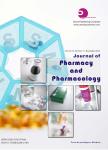Central Sensitization of HPA Axis in Modulation of Neuropathic Pain in Diabetic Rats
Central Sensitization of HPA Axis in Modulation of Neuropathic Pain in Diabetic Rats作者机构:Department of Pharmacology School of Pharmaceutical Sciences Himachal Pradesh 173212 lndia
出 版 物:《Journal of Pharmacy and Pharmacology》 (药剂与药理学(英文版))
年 卷 期:2014年第2卷第4期
页 面:269-276页
学科分类:1007[医学-药学(可授医学、理学学位)] 10[医学]
主 题:Diabetes neuropathy HPA axis sciatic nerve ligation
摘 要:The present study was designed to investigate the possible role ofHPA (hypothalamic-pituitary-adrenal) axis in neuropathic pain in streptozotocin induced diabetic rats. Wistar albino rats of either sex weighing 180-220 g (n = 6) were employed. Diabetes was induced by administering STZ (streptozotocin) (45 mg/kg, i.p.) once. Neuropathy was induced by the ligation of sciatic nerve in diabetic animals. A glucocorticoid receptor antagonist: ketoconazole 175 mg/kg, p.o. and glucocorticoid receptor agonist: hydrocortisone 1 mg/kg, i.p. were given. Assessment of neuropathic pain was achieved using hot plate and hot immersion tests. Tissue biochemical: lipid peroxidation, NO and glutathione were estimated on 28th day spectrophotometrically. Plasma cortisol level was also estimated using HPLC (high performance liquid chromatography). Sciatic nerve ligation to diabetic animals caused significant increase in nociceptive responses as hyperalgesia and allodynia, tissue lipid peroxidation and NO products, and decrease in GSH (glutathione) level, in comparison to SC (saline control). Ketoconazole administration produced decreased pain responses as well as decrease in oxidative stress and inflammatory mediators. Administration of hydrocortisone resulted in suppression of HPA axis. The activation of HPA axis in diabetic animals resulted in significant pain response. This may be due to increased corticosterone level which in turn desensitizes HPA axis and decreased nociceptive response in diabetic animals observed.



